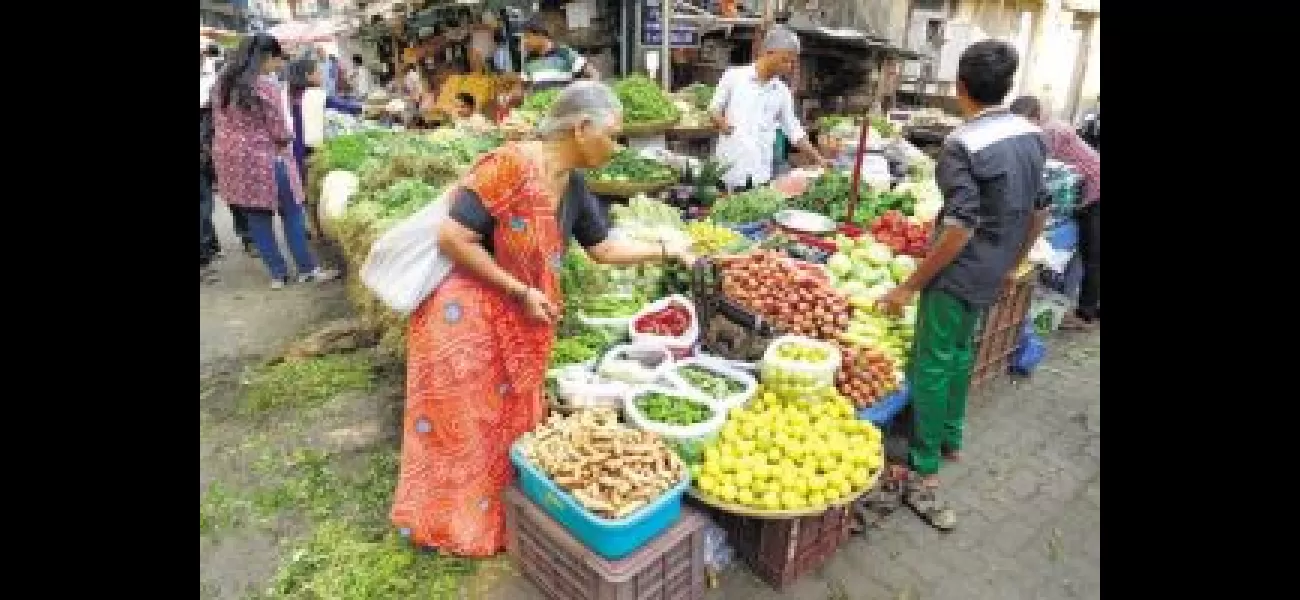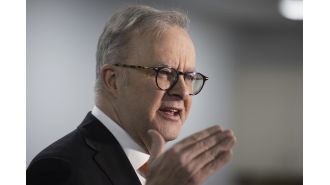May's wholesale inflation hits 15-month high at 2.61% due to heatwave driving up food prices.
In New Delhi, wholesale inflation increased to 2.61% in May due to high temperatures and pricier food and manufactured goods, marking a three-month rise.
June 14th 2024.

In May, the wholesale inflation in India rose to a 15-month high of 2.61%, according to the Ministry of Commerce & Industry's statement released on Friday. This is the third consecutive month of inflation increase, with the last high seen in February 2023 at 3.85%. The rise in inflation is primarily due to the extreme heatwave conditions that have pushed up prices of food items, especially vegetables, and also the cost of manufactured products.
The data shows that food inflation has risen to a 10-month high of 9.82% in May. The prices of vegetables have increased by 32.42%, with onions and potatoes showing the highest inflation rates at 58.05% and 64.05% respectively. Pulses have also seen a significant rise in inflation at 21.95%. Bank of Baroda economist Aditi Gupta predicts that food inflation will remain high due to the ongoing heatwave in the country and the progress of the monsoon will play a crucial role in determining the future trajectory.
In addition to the rise in food prices, global metal prices have also contributed to the increased inflation in the manufacturing category. In May, the inflation in manufactured products was at 0.78%, which is higher than the previous month's 0.42%. Barclays economist Shreya Sodhani points out that this is the fourth consecutive month of rise in manufacturing prices, indicating that companies are facing higher input costs.
ICRA chief economist Aditi Nayar highlights that the core-WPI (Wholesale Price Index) has reverted to the inflationary territory in May 2024 after 14 months. This alone has contributed 57 basis points to the overall 130 basis points rise in the headline WPI compared to April 2024. In the fuel and power category, inflation stood at 1.35%, marginally lower than the previous month's 1.38%. Nayar predicts a modest increase to 3% in June 2024, considering the global commodity prices, including those for Indian crude oil, have decreased.
However, the rise in May WPI is in contrast to the retail inflation data for the same month, which showed a one-year low of 4.75%. The Reserve Bank of India mainly considers retail inflation while making monetary policy decisions. In its June meeting, the RBI kept the interest rates unchanged for the eighth time in a row. Sodhani believes that if firms' pricing power improves and consumption revives, the rise in wholesale prices may gradually feed into retail prices. She predicts a possible window for monetary easing in December 2024 with a potential rate cut of 50 basis points.
The data shows that food inflation has risen to a 10-month high of 9.82% in May. The prices of vegetables have increased by 32.42%, with onions and potatoes showing the highest inflation rates at 58.05% and 64.05% respectively. Pulses have also seen a significant rise in inflation at 21.95%. Bank of Baroda economist Aditi Gupta predicts that food inflation will remain high due to the ongoing heatwave in the country and the progress of the monsoon will play a crucial role in determining the future trajectory.
In addition to the rise in food prices, global metal prices have also contributed to the increased inflation in the manufacturing category. In May, the inflation in manufactured products was at 0.78%, which is higher than the previous month's 0.42%. Barclays economist Shreya Sodhani points out that this is the fourth consecutive month of rise in manufacturing prices, indicating that companies are facing higher input costs.
ICRA chief economist Aditi Nayar highlights that the core-WPI (Wholesale Price Index) has reverted to the inflationary territory in May 2024 after 14 months. This alone has contributed 57 basis points to the overall 130 basis points rise in the headline WPI compared to April 2024. In the fuel and power category, inflation stood at 1.35%, marginally lower than the previous month's 1.38%. Nayar predicts a modest increase to 3% in June 2024, considering the global commodity prices, including those for Indian crude oil, have decreased.
However, the rise in May WPI is in contrast to the retail inflation data for the same month, which showed a one-year low of 4.75%. The Reserve Bank of India mainly considers retail inflation while making monetary policy decisions. In its June meeting, the RBI kept the interest rates unchanged for the eighth time in a row. Sodhani believes that if firms' pricing power improves and consumption revives, the rise in wholesale prices may gradually feed into retail prices. She predicts a possible window for monetary easing in December 2024 with a potential rate cut of 50 basis points.
[This article has been trending online recently and has been generated with AI. Your feed is customized.]
[Generative AI is experimental.]
0
0
Submit Comment





